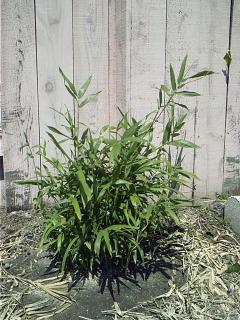California Natural Materials

I'm posting this mainly for those who might be weaving baskets in the California area because there seems to be a type of reed which was introducted in California in the National Forrests and along the rivers which is Arundo Donax, this is a member of the reed family and was imported to the U.S. from Japan or Asia. This is refered to in California by many as river cane because it grows along the river banks here, but this is not the same cane family as the Southeastern River Cane used in Cherokee or SE Indian baskets. Arundo is used in making musical instruments such as the Oboe and the reeds for Clarinets.
River Cane of the Southeast is a member of the Arundinaria family and is a native plant to the Southeastern U.S. I have also seen this group refered to as both a bamboo and a grass. This river cane grows all the way from at least Oklahoma to Virginia, although today the quality of the cane is not the same as in earlier days. This cane grew along the fertile areas of the SE, where today it has been replaced by farming operations. Pesticide is also a growing concern when harvesting and processing natural materials.
If you have done any research of early America, many explorers refer to the thick cane brakes that they had to go through and describe using an axe or hatchet to cut a path through it, this is the River Cane they were refering to. Daniel Boone speaks of it when he went into Kentucky in the 1700s.
In California also if gathering willow in the southern part of the state, mountain lions can be a real concern.
The photo above is of my River Cane, it has to grow to about the size of your thumb to be usable for processing and weaving. The best river cane is that which is about the size of your thumb, it is usually harvested in the winter. In the SE you can also find it in some of the National Forrests and Native Americans are usually allowed to gather it from there, if for personal use.
